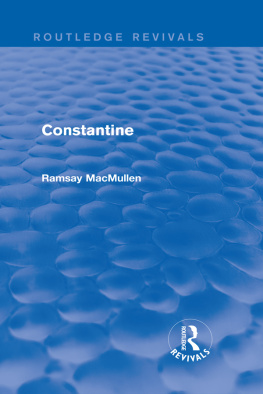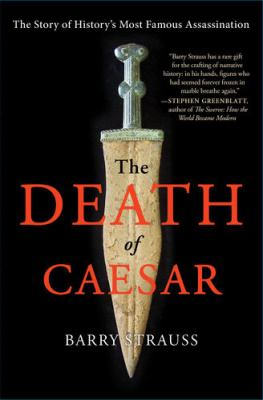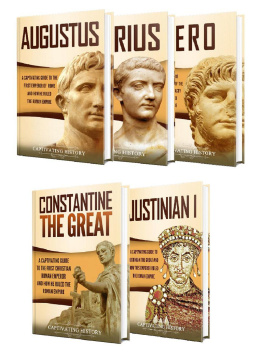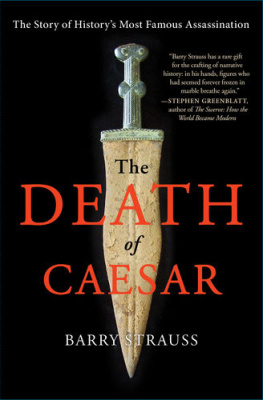Routledge Revivals
Constantine
This study, first published in 1969, presents an astute and authoritative depiction of the cultural, religious and secular developments which shook the Roman world in the late 3rd and early 4th centuries, much of it under the auspices of the Emperor, Constantine the Great.
Constantine was at the heart of the transition from pagan antiquity to Christendom. Rejecting the collegiate imperial system of his recent predecessors, he reunited the two halves of the Empire; established Christianity as its formal religion; and shifted the capital of the Roman world definitively to the city which would survive the collapse of the West and persevere for another thousand years, Constantinople.
The general reader will enjoy Constantine as a lucidly composed and accessible synthesis of ancient sources and modern contributions to the study of this towering figure.
First published in 1969
by The Dial Press, Inc.
Reprinted in 1987
by Croom Helm Ltd
This edition first published in 2014 by Routledge
2 Park Square, Milton Park, Abingdon, Oxon, OX14 4RN
and by Routledge
711 Third Avenue, New York, NY 10017
Routledge is an imprint of the Taylor & Francis Group, an informa business
1969; 1987 Ramsay MacMullen
The right of Ramsay MacMullen to be identified as author of this work has been asserted by him in accordance with sections 77 and 78 of the Copyright, Designs and Patents Act 1988.
All rights reserved. N o part of this book may be reprinted or reproduced or utilised in any form or by any electronic, mechanical, or other means, now known or hereafter invented, including photocopying and recording, or in any information storage or retrieval system, without permission in writing from the publishers.
Publishers Note
The publisher has gone to great lengths to ensure the quality of this reprint but points out that some imperfections in the original copies may be apparent.
Disclaimer
The publisher has made every effort to trace copyright holders and welcomes correspondence from those they have been unable to contact.
ISBN 13: 978-1-138-01536-4 (hbk)
ISBN 13: 978-1-138-01536-4 (ebk)
Additional materials are available on the companion website at
http://www.routledge.com/books/series/Routledge_Revivals
Ramsay MacMullen 1969; 1987
Croom Helm Ltd, Provident House,
Burrell Row, Beckenham, Kent BR3 1AT
Croom Helm Australia, 4450 Waterloo Road,
North Ryde, 2113, New South Wales
Published in the USA by
Croom Helm
in association with Methuen, Inc.
29 West 35th Street,
New York, NY 10001
This book was originally published by The Dial Press, Inc. in 1969 and is here reprinted by arrangement.
British Library Cataloguing in Publication Data
MacMullen, Ramsay
Constantine. (Crosscurrents in World history).
1. Constantine I, Emperor of Rome
2. Roman emperors Biography
I. Title II. Series
936.080924 DG315
ISBN 0-7099-4685-6
Library of Congress Cataloging-in-Publication Data
MacMullen, Ramsay, 1928-
Constantine.
Bibliography: p. 241
Includes index.
1. Constantine I, Emperor of Rome, d. 337. 2. Rome History Constantine I, the Great, 306-337. 3. Rome emperors Biography. I. Title.
DG315.M3 1986 937.080924 86-29050
ISBN 0-7099-4685-6 (pbk.)
Printed and bound in Great Britain by
Biddies Ltd, Guildford and Kings Lynn
Table of Contents
Illustrations
| Plate |
(W. F. Volbach, Early Christian Art, Plate 16) |
(A: F. Gnecchi, I medaglioni romani I, Plate 4 no. 13 B, D, E: Courtesy American Numismatic Society C,F, G: Volbach, Plate 21) |
(A: L. Voelkl, Der Kaiser Konstantin, Plate 52 B: Volbach, Plate 21 C: M. R. Alfldi, Die constantintsche Goldprgung, Plate 4 no. 61) |
(Photo, Alinari) |
(H. Khler, Rome and Her Empire, p. 187) |
(Khler, p. 199) |
(A: G. M. A. Hanfmann, Roman Art, Plate 46 B: Courtesy American Numismatic Society) |
(W. Reusch, Archologischer Anzeiger 1962, 4, p. 902, Plate 10) |
(A: A. Giuliano, Arco di Costantino, Plate 35 B: Volbach, Plate 21 C: P. M. Bruun, The Raman Imperial Coinage VII, Plate 13 no. 206 D: Alfldi, Plate 4 no. 61) |
(A: Alfldi, Plate 39 no. 306 B: Volbach, Plate 21) |
(Alfldi, Plate 41) |
(AD: Courtesy American Numismatic Society E: Alfldi, Plate 17 no. 220) |
(Voelkl, Plate 55) |
(Photo, Alinari) |
(Photo, Alinari) |
(Voelkl, Plate 66) |
The road that mounts the Capitoline hill in Rome today, shaking off its curves, at the top opens out on the Piazza del Campidoglio. In the center is a life-size equestrian statue of Marcus Aurelius. The horse strides vibrantly throjugh the air, filled with strength; its riderbearded, prim, slightly exophthalmicseems quite out of place on its back. He is too unheroic, too civilian; too well known to us, perhaps. We know his correspondence with his tutor Fronto, how each surmounted a headache, a cough, or the ague, the delight they shared in the refinements of rhetoric. If you are ever tied up in perpetual business, Fronto advises him on the duties of his office, and thus lack the time to compose an oration, have you not derived support from certain hurried but profitable recreations in research, in collecting synonyms and occasionally in seeking out stylistic oddities? Or again, the delight of philosophy: we have Marcus Aurelius Meditations, we know his resolve to clothe thyself in simplicity and modesty . Only attend to thyself, and resolve to be a good man in every act . Look within . Retire into thyself; for there only can be found the right measure for conduct, not in the pompous proportions of the emperors actual rank. He shrinks from that, to be no more than a man. Have a care lest you become a Caesar, lest you are dyed in purple, he admonishes himself.
). It balances, bodiless, on a pedestal. From brow to chin, it measures six feet. Stains streak down its surface. The eyes that stare straight through the observer to some distant source of power, the great beak of a nose, the jaw protruding, all in superhuman size, astound and terrify.
Events that could persuade the Romans to turn from men to giants as rulers, that could so overwhelmingly remake the role of emperor into an embodiment of Herculean powers and authority, were events of no ordinary era. Its course began with the invasions which Marcus Aurelius faced on the northern frontier, and which he barely repulsed. Novelty lay not in the barbarian threat itself but in the fact that it could penetrate to Italy, and could reduce the emperor to the conscription of slaves into his army and the auctioning of the palace jewels and plate to fill up his war chest. The new era began, too, with the martyrs of Lyonsnot that the harrying of Christians was new but that, for the first time under Marcus Aurelius, we have a full account of how a local persecution might arise. A few months earlier the throne had graciously decreed that victims for municipal arenas might be supplied henceforth by purchase of condemned criminals from officers of the state, at a trifling cost. Thus, when an explosion of anti-Christian hatred shook Lyons, the sufferers found themselves thrown to the beasts. One Christian, Attalus, was identified as a Roman citizen. His death was deferred, pending a decision from Marcus Aurelius on the legal implications of that status. The answer of the emperor in due time arrived. Roman citizens were only to be beheaded, and so they all were except Attalus himself, whom, to please the people, the governor put to death by torture before an audience of many thousands.










